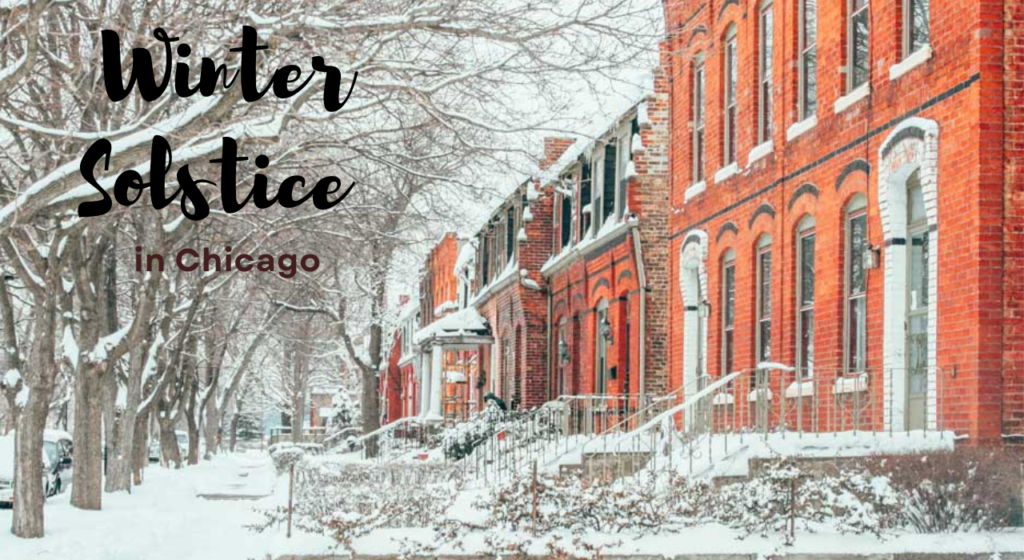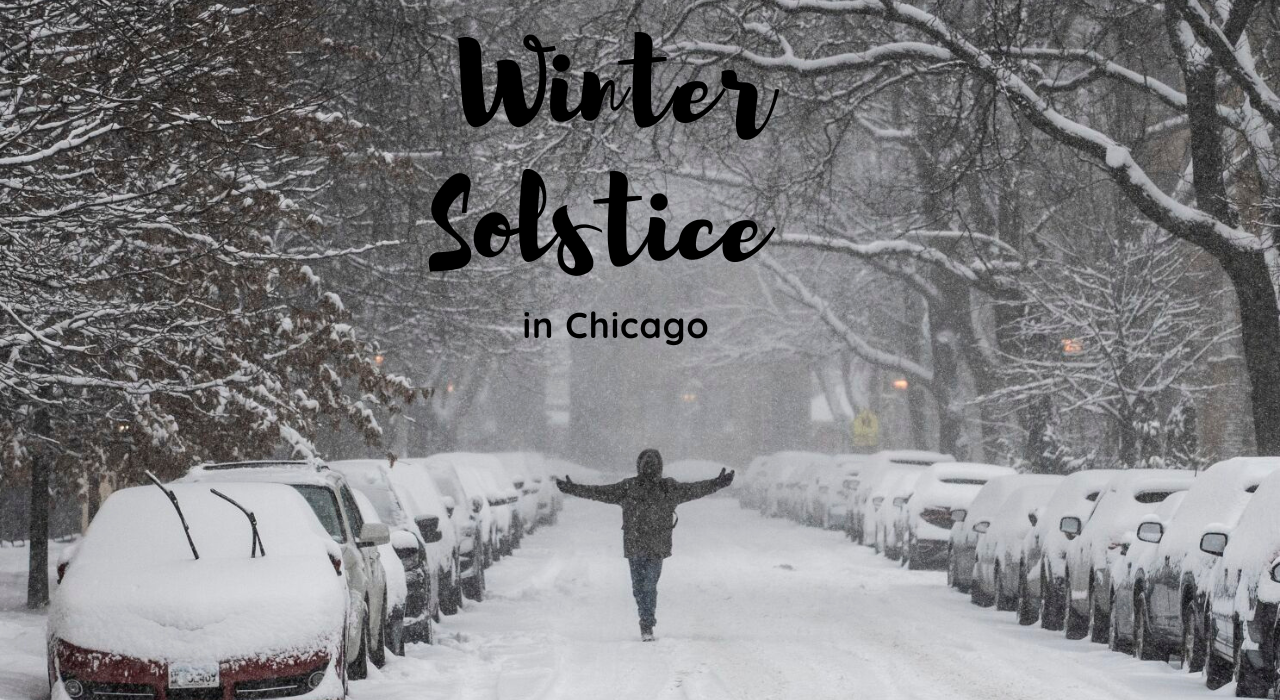As we celebrate the winter solstice, it officially heralds the beginning of astronomical winter, even though meteorological winter commenced at the onset of the month. It’s a celestial moment that signals the shift in seasons, marking the shortest day and the longest night of the year.
Get ready for winter because the winter solstice is upon us! It officially kicks off the astronomical winter, even though meteorological winter already started at the beginning of the month. As the seasons change, here’s a quick rundown of what to expect during the winter.
Wondering when winter officially begins and when we experience the winter solstice in 2023? According to NASA, mark your calendar for 9:27 p.m. on December 21st – that’s when the winter solstice will take center stage. Brace yourself for the shortest day of the year in terms of total daylight!

Ever wondered about the winter solstice? It’s not just the day with the least amount of daylight; in Chicago, we’re looking at just under nine hours and eight minutes of sunlight on December 21. Astronomers explain that this is the moment when the Earth’s axis is tilted farthest away from the sun. Interestingly, while we experience the winter solstice in the Northern Hemisphere, it’s the summer solstice down south in the Southern Hemisphere. During our summer solstice, the Earth’s axis is at its closest point to the sun in its yearly journey around the celestial dance floor.
Curious about how the winter solstice affects sunrise and sunset times? Well, here’s the scoop: While the solstice doesn’t mean we’ll experience the earliest sunset, it’s worth noting that the Chicago area witnessed its earliest sunset earlier this month, just a smidge after 4:19 p.m. Surprisingly, on December 15, the sun will set at 4:20 p.m., indicating that sunsets are gradually getting later a week before the solstice. Even though the days are getting shorter, it’s not due to sunset; instead, it’s because sunrise is happening later and later. This trend will continue until early January when the sunrise will occur around 7:18 a.m.
Ready for the kick-off of winter in Chicago? Well, don’t expect bone-chilling temperatures! The mercury is planning to hang out in the mid-40s, even spiking into the 50s as we head into the weekend and Christmas. According to the NBC 5 Storm Team, the weather is going to be surprisingly mild. The National Weather Service notes that the average high temperature on December 21 is usually 35 degrees, with a record-breaking 62 degrees observed on the same day back in 1967. Winter, but make it mild!
Wondering why the winter solstice gets the honor of being labeled as the first day of winter?
Well, it’s part of a celestial tradition! Solstices, including both winter and summer, are considered the official kick-off points for the astronomical seasons. The National Centers for Environmental Information explains that these seasons are marked by solstices and equinoxes, where the sun either aligns over the equator or reaches its furthest point from it. Now, if you’re into meteorological seasons, they’re a bit more calendar-friendly, splitting the year into three-month chunks based on temperature cycles.
Following the winter solstice, what occurs?
Cheer up! The winter solstice might mark the shortest day of the year, but here’s a silver lining: Every day that follows in the Northern Hemisphere will bring a little more daylight into your life. So, as we move forward, expect those days to gradually lengthen until we reach the peak of sunlight during the summer solstice on June 20, 2024. Warmer days are on the horizon!
How is the winter solstice recognized by humans?
For eons, humans have been tuned into the cosmic rhythms of our planet, celebrating the winter solstice as a pivotal moment. Ancient civilizations, wise beyond their years, ingeniously designed structures like Stonehenge and the Torreon in Machu Picchu, Peru, aligning them with the sun’s dance across the sky. It’s a timeless acknowledgment of Earth’s cycles and a nod to the celestial ballet that governs our world.
As we celebrate the winter solstice, it officially heralds the beginning of astronomical winter, even though meteorological winter commenced at the onset of the month. It’s a celestial moment that signals the shift in seasons, marking the shortest day and the longest night of the year.
Get ready for winter because the winter solstice is upon us! It officially kicks off the astronomical winter, even though meteorological winter already started at the beginning of the month. As the seasons change, here’s a quick rundown of what to expect during the winter.
Wondering when winter officially begins and when we experience the winter solstice in 2023? According to NASA, mark your calendar for 9:27 p.m. on December 21st – that’s when the winter solstice will take center stage. Brace yourself for the shortest day of the year in terms of total daylight!
Ever wondered about the winter solstice? It’s not just the day with the least amount of daylight; in Chicago, we’re looking at just under nine hours and eight minutes of sunlight on December 21. Astronomers explain that this is the moment when the Earth’s axis is tilted farthest away from the sun. Interestingly, while we experience the winter solstice in the Northern Hemisphere, it’s the summer solstice down south in the Southern Hemisphere. During our summer solstice, the Earth’s axis is at its closest point to the sun in its yearly journey around the celestial dance floor.
Curious about how the winter solstice affects sunrise and sunset times? Well, here’s the scoop: While the solstice doesn’t mean we’ll experience the earliest sunset, it’s worth noting that the Chicago area witnessed its earliest sunset earlier this month, just a smidge after 4:19 p.m. Surprisingly, on December 15, the sun will set at 4:20 p.m., indicating that sunsets are gradually getting later a week before the solstice. Even though the days are getting shorter, it’s not due to sunset; instead, it’s because sunrise is happening later and later. This trend will continue until early January when the sunrise will occur around 7:18 a.m.
Ready for the kick-off of winter in Chicago? Well, don’t expect bone-chilling temperatures! The mercury is planning to hang out in the mid-40s, even spiking into the 50s as we head into the weekend and Christmas. According to the NBC 5 Storm Team, the weather is going to be surprisingly mild. The National Weather Service notes that the average high temperature on December 21 is usually 35 degrees, with a record-breaking 62 degrees observed on the same day back in 1967. Winter, but make it mild!
Wondering why the winter solstice gets the honor of being labeled as the first day of winter?
Well, it’s part of a celestial tradition! Solstices, including both winter and summer, are considered the official kick-off points for the astronomical seasons. The National Centers for Environmental Information explains that these seasons are marked by solstices and equinoxes, where the sun either aligns over the equator or reaches its furthest point from it. Now, if you’re into meteorological seasons, they’re a bit more calendar-friendly, splitting the year into three-month chunks based on temperature cycles.
Following the winter solstice, what occurs?
Cheer up! The winter solstice might mark the shortest day of the year, but here’s a silver lining: Every day that follows in the Northern Hemisphere will bring a little more daylight into your life. So, as we move forward, expect those days to gradually lengthen until we reach the peak of sunlight during the summer solstice on June 20, 2024. Warmer days are on the horizon!
How is the winter solstice recognized by humans?
For eons, humans have been tuned into the cosmic rhythms of our planet, celebrating the winter solstice as a pivotal moment. Ancient civilizations, wise beyond their years, ingeniously designed structures like Stonehenge and the Torreon in Machu Picchu, Peru, aligning them with the sun’s dance across the sky. It’s a timeless acknowledgment of Earth’s cycles and a nod to the celestial ballet that governs our world.
